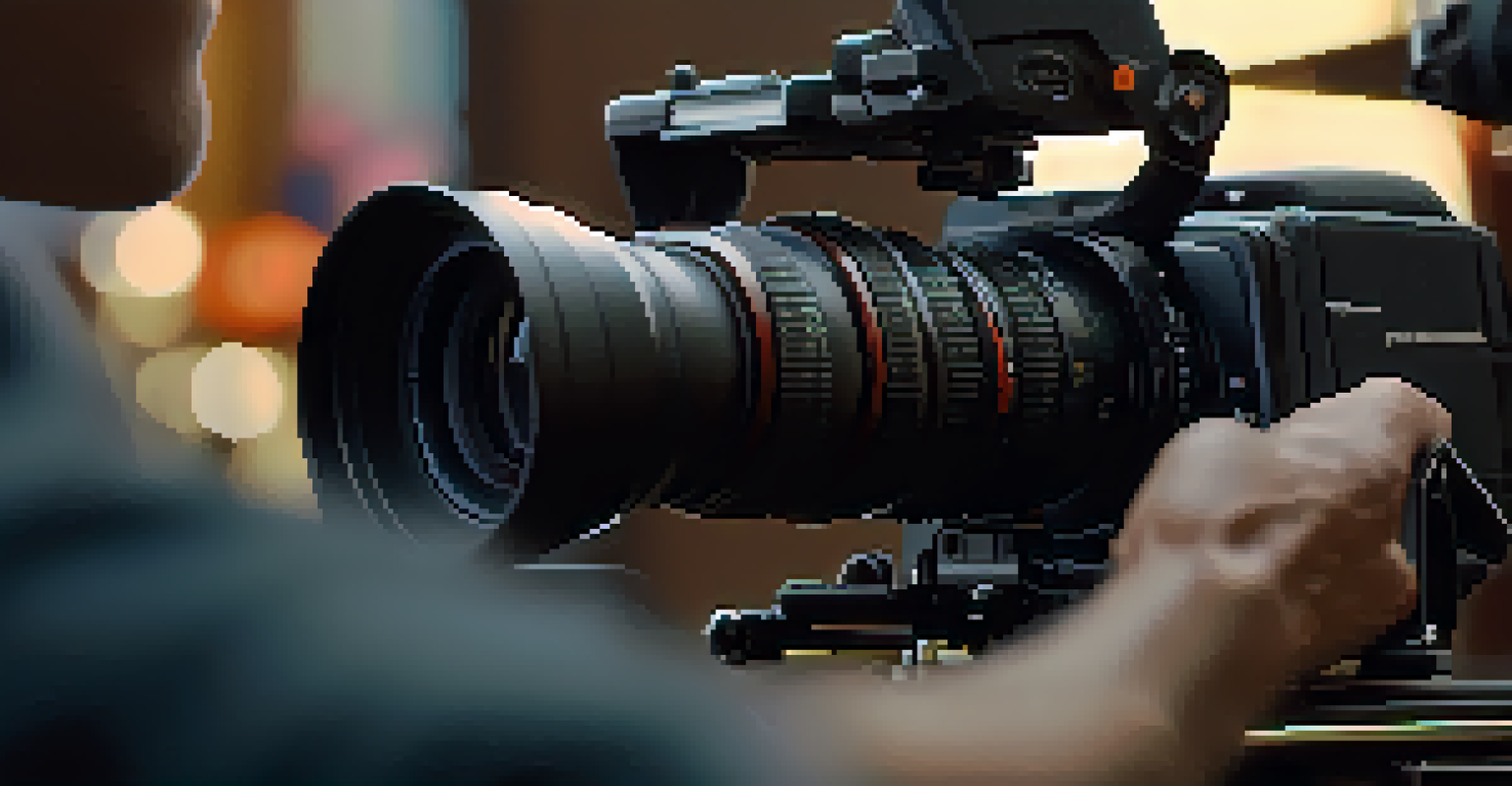Decision-Making: A Director's Guide to Filmmaking Success

Understanding the Role of a Director in Decision-Making
As a director, your role extends far beyond simply calling 'action'. You are the captain of the ship, responsible for steering the entire creative vision of the film. Every decision you make influences not just the narrative, but also the entire filmmaking process, from pre-production to post. This responsibility can be daunting, but understanding your role is the first step to effective decision-making.
The director is the captain of the ship; they need to steer the production through both calm and stormy seas.
Directing is about collaboration; you'll need to work closely with writers, producers, and the crew. Each of these relationships will require you to make informed choices that balance your artistic vision with practical considerations. It’s essential to listen and communicate effectively, as decisions made in isolation can lead to disconnect and misunderstandings on set.
Ultimately, your ability to make decisions will significantly impact the film's success. The best directors are those who can adapt, pivot, and make choices that resonate with their audience, ensuring that the story is told in the most compelling way possible.
The Importance of Pre-Production Decisions
Pre-production is the foundation upon which your film stands. The decisions made during this phase set the tone for everything that follows, from casting choices to location scouting. This is where your vision begins to take shape, and having a clear plan will save you time and resources once filming starts.

For example, selecting the right cast can transform a script into a powerful performance. Casting decisions should align with the character's essence, which requires understanding both the script and the actors’ strengths. Additionally, location choices can enhance the storytelling by adding depth and authenticity to the film’s atmosphere.
Directors Shape the Film's Vision
As the captain of the creative ship, directors influence every aspect of filmmaking through informed decision-making and collaboration.
By investing time in thoughtful pre-production decision-making, you pave the way for a smoother shoot. When everyone is on the same page and prepared, you can focus on storytelling rather than troubleshooting, ultimately leading to a more cohesive film.
Making Creative Decisions During Filming
Once filming begins, you’ll encounter a whirlwind of on-the-fly decisions. Whether it's adjusting a scene's lighting or reworking a line of dialogue, flexibility is key. The ability to think creatively in the moment can elevate your film and capture the essence of spontaneous storytelling.
Filmmaking is a collaborative effort; you can't make a movie alone, and the best decisions are made when everyone contributes.
For instance, if weather conditions change unexpectedly, a director might need to adapt the shooting schedule or even rewrite a scene to fit the new environment. Embracing these changes can lead to unique, unplanned moments that enhance the narrative.
Remember, creativity thrives in a collaborative environment. Encourage your crew to share ideas and solutions, as this can lead to innovative approaches you hadn’t considered. The best decisions often arise from the collective input of a passionate team.
Balancing Artistic Vision with Practical Constraints
Every director faces the challenge of balancing their artistic vision with practical constraints, such as budget and time. It's a delicate dance between what you want to achieve and what is feasible. Being aware of these limitations from the outset can help you make informed decisions that still align with your creative goals.
For example, if a particular special effect is too costly, consider alternative methods that might achieve a similar effect without breaking the bank. Creative problem-solving is essential in filmmaking; sometimes the best solutions come from thinking outside the box.
Pre-Production Sets the Foundation
The choices made during pre-production, such as casting and location, create the groundwork for a successful film shoot.
Ultimately, staying true to your vision while being pragmatic will serve you well. It’s about finding that sweet spot where creativity meets practicality, ensuring you can deliver a film that resonates with your audience.
Utilizing Feedback for Better Decision-Making
Feedback is an invaluable resource in the filmmaking process. Whether it comes from producers, crew, or test audiences, gathering insights can lead to more informed decision-making. It’s essential to cultivate an environment where constructive criticism is welcomed and encouraged.
For example, after a rough cut of your film is screened, audience reactions can provide clarity on what resonates and what doesn’t. This feedback can guide your editing decisions, helping to refine the narrative and enhance emotional impact.
However, it's crucial to discern which feedback aligns with your vision and which may steer you off course. Effective directors know how to sift through feedback, retaining what is beneficial while staying true to their artistic compass.
The Role of Intuition in Decision-Making
Intuition plays a powerful role in decision-making, especially in the fast-paced world of filmmaking. As you gain experience, you'll find that your gut feelings often guide you toward the right choices. Trusting your instincts can be just as important as relying on data and feedback.
For instance, if you feel a particular scene isn't working despite positive feedback, it may be worth revisiting. Your intuition can help you sense when something isn't quite right, even if you can't pinpoint why. This connection to your creative instincts can lead to breakthroughs that elevate your film.
Post-Production Finalizes Impact
In post-production, final decisions regarding editing and sound design are crucial to refining the film and enhancing audience connection.
Balancing intuition with analytical thinking creates a well-rounded approach to decision-making. As you navigate the complexities of filmmaking, remember to trust yourself—your unique perspective is what can make your film truly special.
Post-Production: Final Decisions that Shape the Film
Post-production is where all the pieces come together, and the final decisions can make or break your film. From editing to sound design, every choice you make during this phase impacts the viewer's experience. This is the time to refine your work and ensure your vision is fully realized.
Editing is particularly crucial, as it dictates the pacing and flow of the story. Deciding what to keep and what to cut can be a difficult task, but it’s vital to maintain the narrative's integrity. Remember, sometimes less is more, and knowing when to simplify can enhance the overall impact.

Additionally, sound design and music choices play a significant role in evoking emotion. The right score can amplify the audience's connection to the film, so take the time to thoughtfully consider these elements. Your final decisions in post-production will be what leaves a lasting impression on your audience.